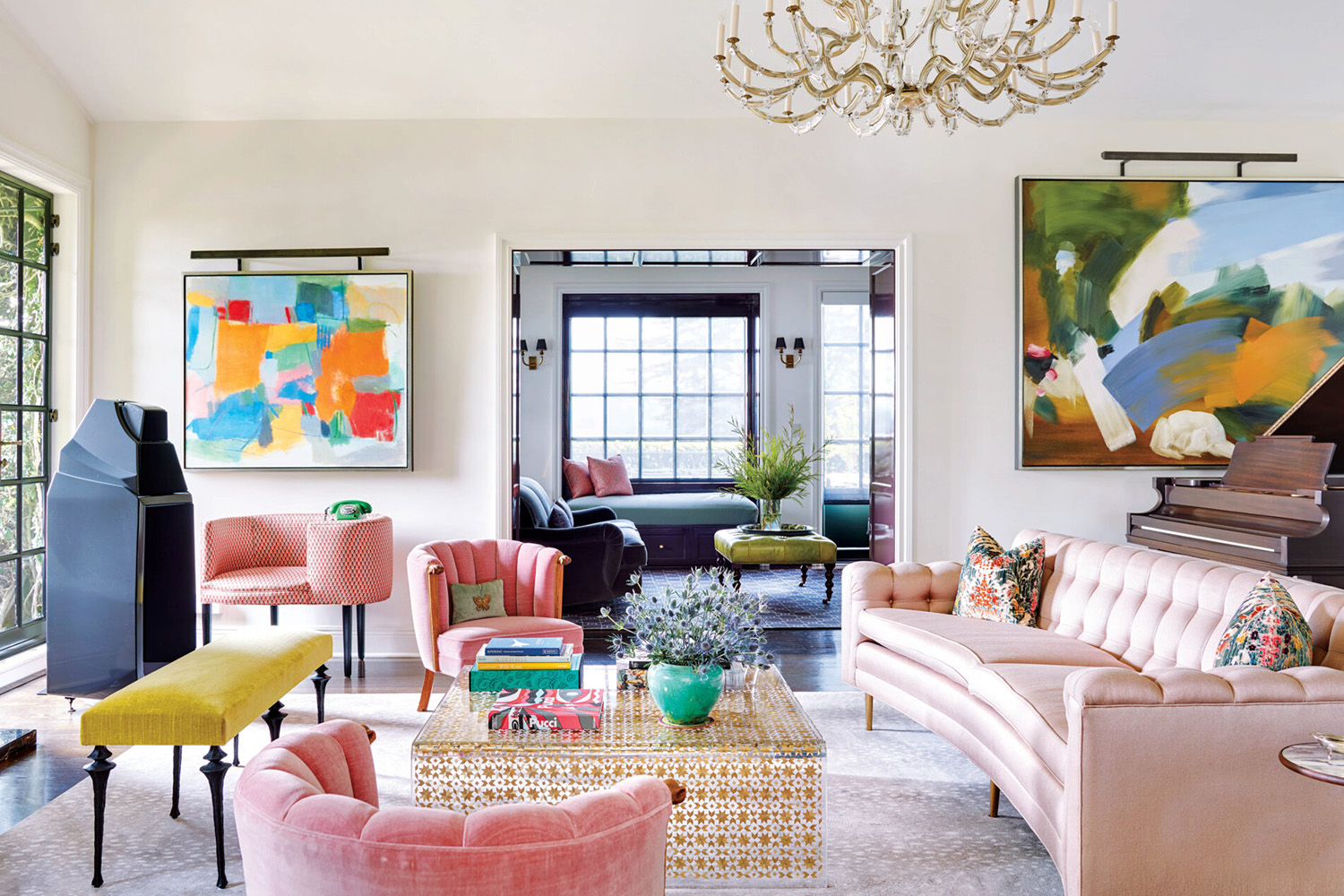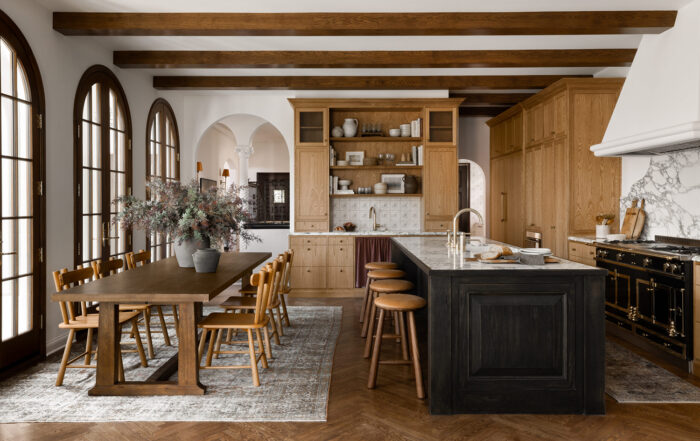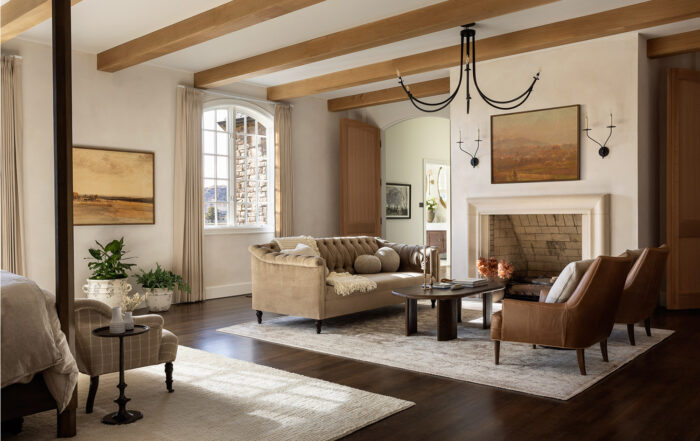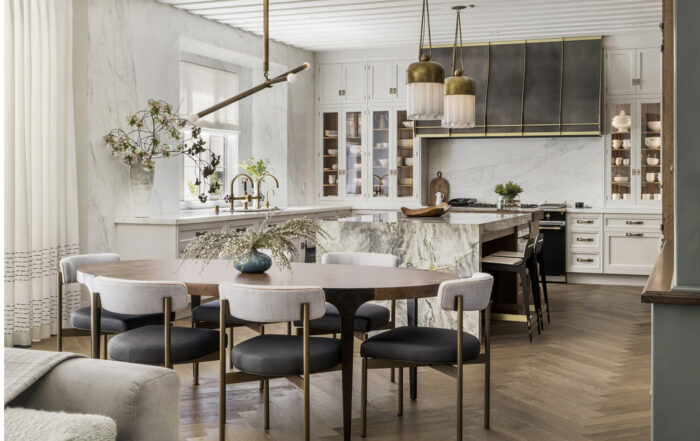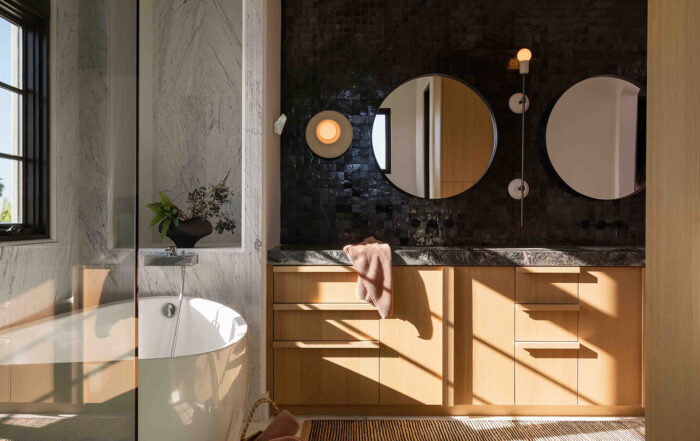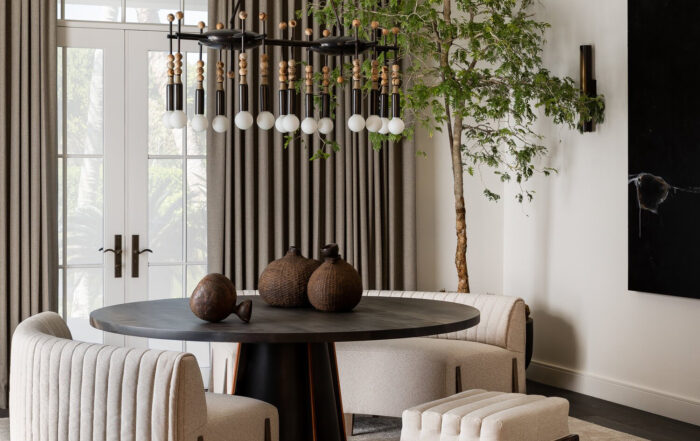Decorating with Color
By Interior Designer, Tracy Svendsen | Published June 06, 2017 | Updated November 04, 2023
Decorating with Color: Welcome to the vibrant world of interior design, where color becomes a powerful tool for transforming a space. This article will explore the art of decorating with color and discover how it can breathe life into your home.
Color has an incredible ability to influence our mood, evoke emotions, and create visual impact. When used strategically, it can completely change the look and feel of a room. Whether you prefer calming neutrals, bold and bright hues, or a harmonious mix of shades, the right color palette can set the tone for your entire space.
Through the clever use of color, you can highlight architectural features, create focal points, and bring out the personality of each room. From painting walls and choosing furniture to accessorizing with textiles and artwork, every decision you make contributes to the overall color scheme and atmosphere of your space.
So, whether you’re looking to create a cozy sanctuary, an energetic workspace, or a sophisticated entertaining area, join me as we delve into the world of color and discover how to create vibrant spaces that reflect your style and personality. Let’s paint the town (or at least your home) with color! Feature image courtesy of LuxeSource.
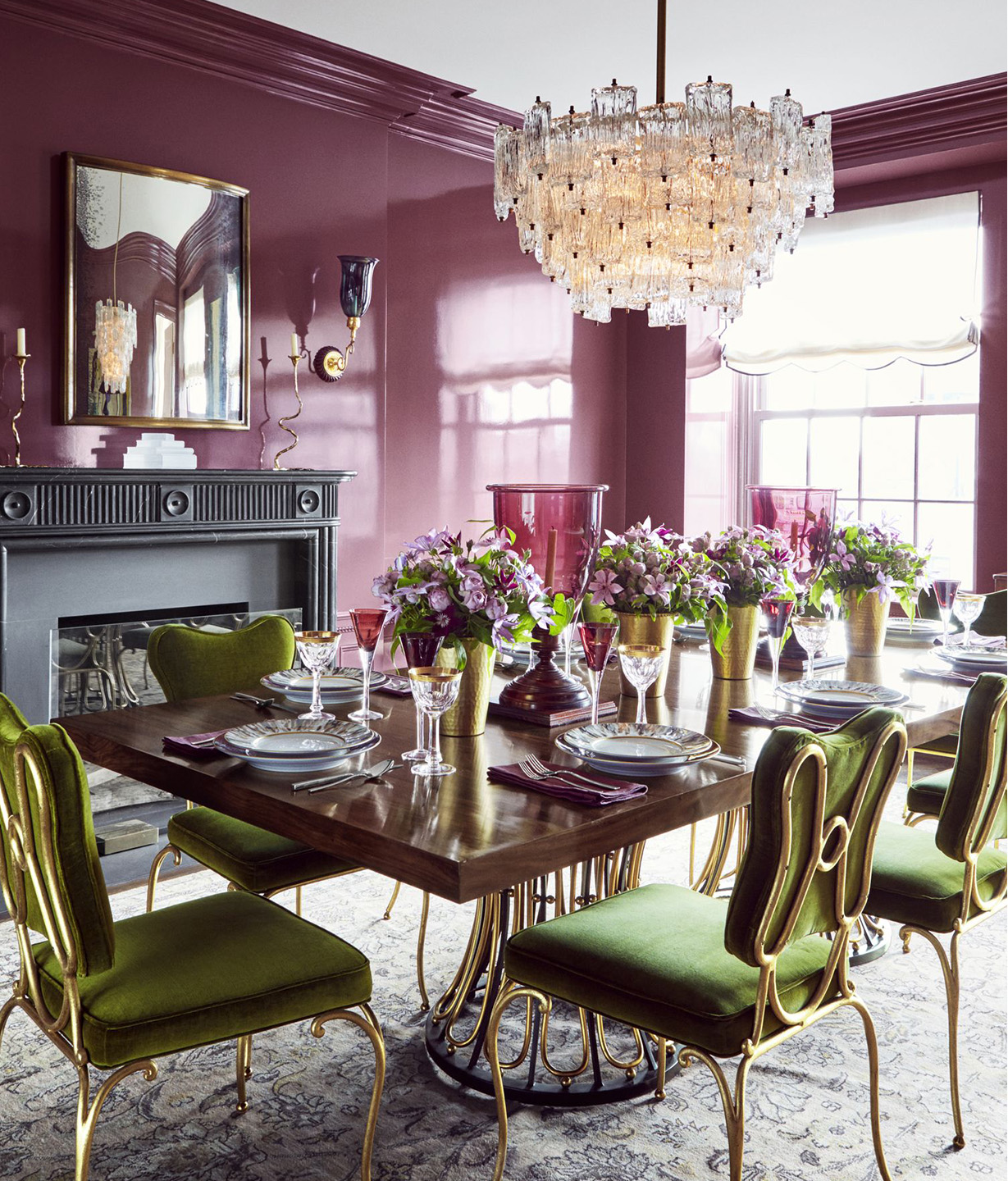
Colorful Dining Room in Hues of Purple and Green | Celerie Kemble Design
Image courtesy of House Beautiful

Colorful Living in Rich Shades of Green, Orange, Yellow & Red
Image courtesy of Cravotta Interiors
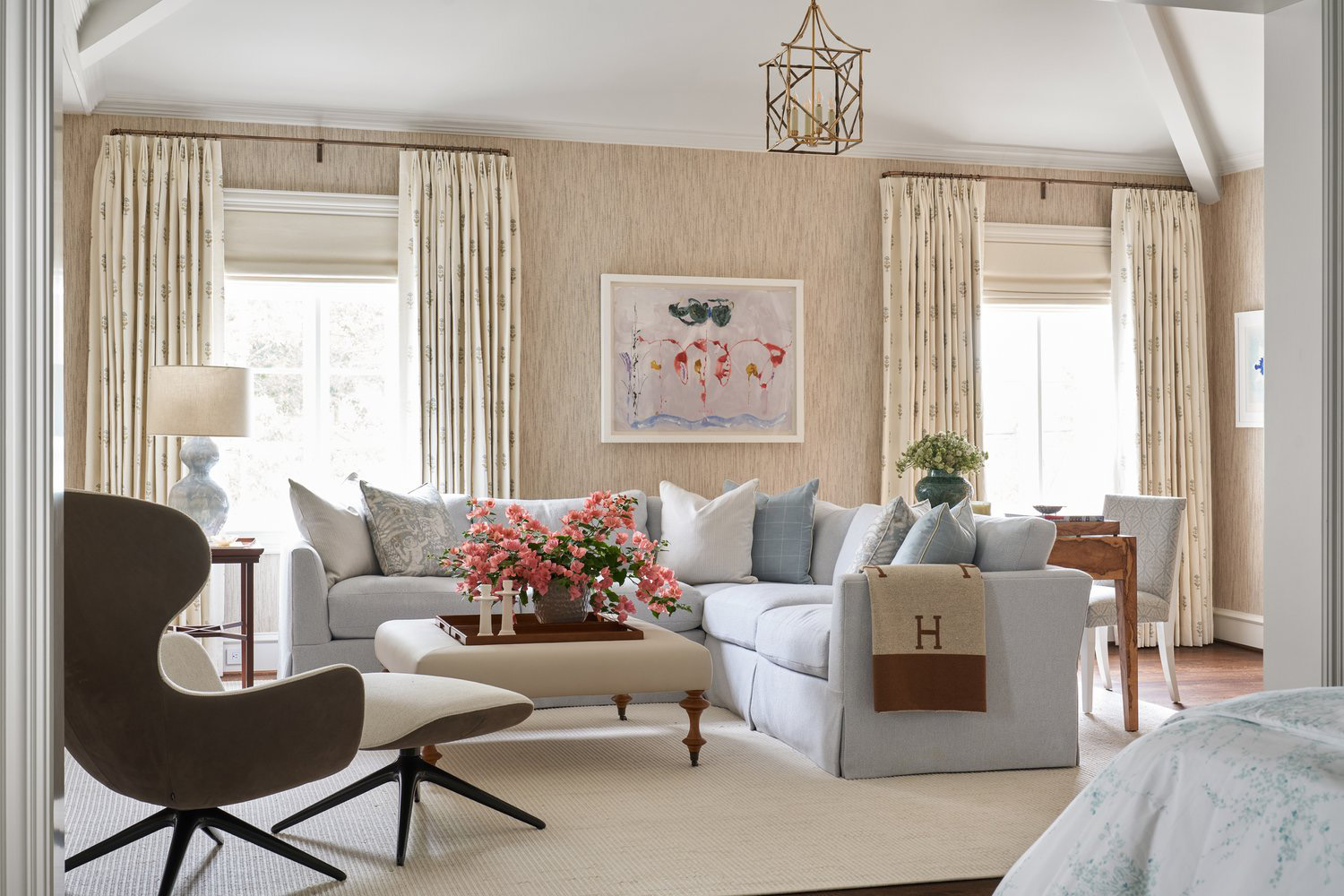
How to Decorate with Color
Image courtesy of Mary Beth Wagner Interiors
Understanding Color Psychology
Colors can evoke specific emotions and influence our perception of a space. For example, warm colors like red, orange, and yellow create a cozy and energetic atmosphere, perfect for social areas like living rooms or dining spaces. On the other hand, cool colors like blue, green, and purple can promote relaxation and tranquility, making them ideal for bedrooms or home offices.
1. Creating Balance with Neutrals
Neutrals play a crucial role in any color scheme, providing a backdrop for more vibrant shades and helping to create balance. Colors like white, beige, and gray can be used on walls, floors, or large furniture pieces to create a sense of calm and provide a visual break from bolder colors. Neutrals can also bring out the richness and depth of other hues in the room.
2. The Power of Accent Colors
Once you have chosen your primary color palette, it’s time to introduce accent colors. These hues will add interest and create focal points within the space. Accent colors can be used in smaller doses through accessories, artwork, or statement furniture. They can help to create visual interest and draw the eye to specific areas of the room.
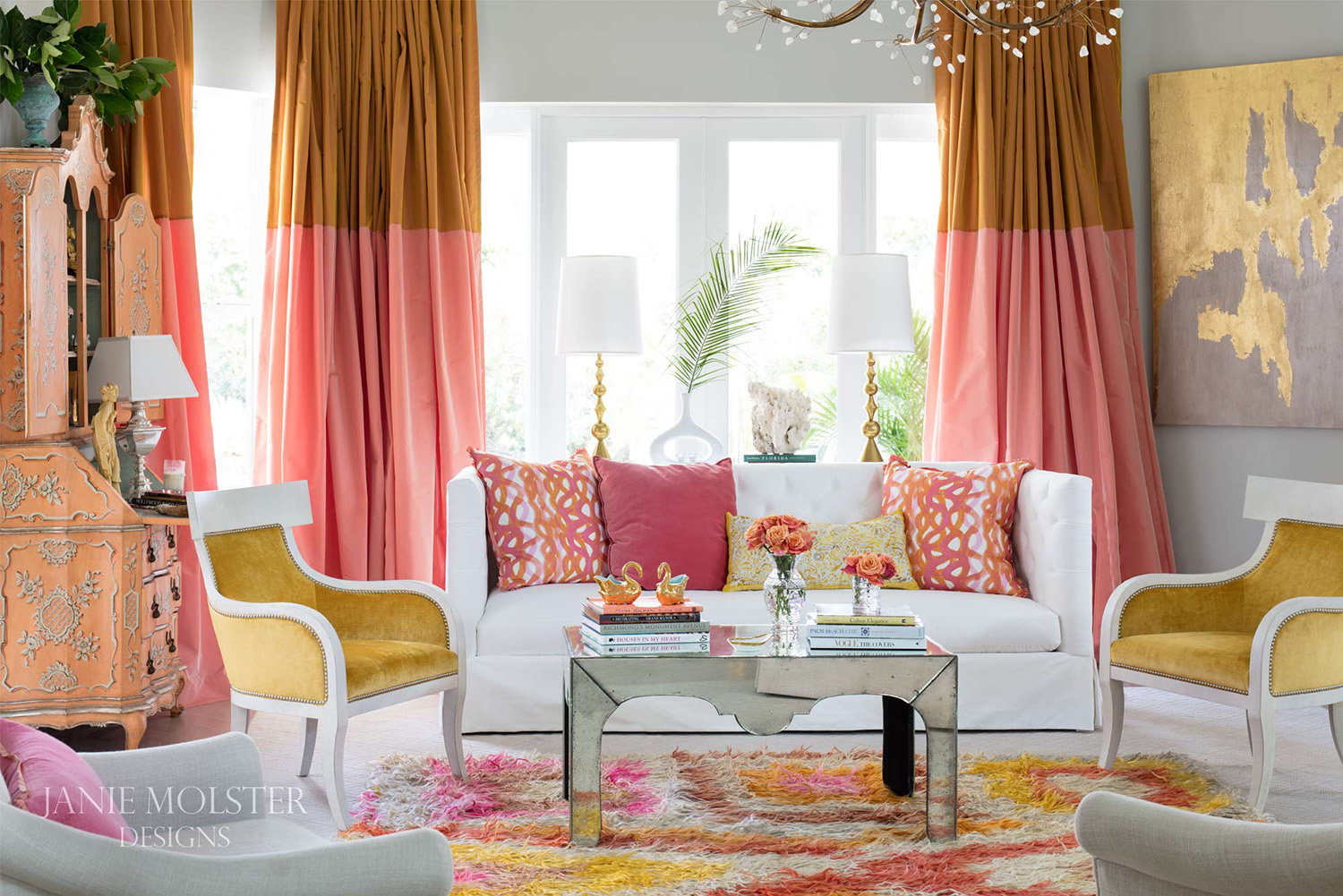
Color in Interior Design
Image courtesy of Janie Molster Design
What Colors Speak to You?
When it comes to decorating with color, the first step is to choose the right color palette. This decision will lay the foundation for the overall atmosphere and style of your space. There are several factors to consider when selecting a color scheme, including the purpose of the room, the size of the space, and your personal preferences.
Yellow has a dual personality. Sunny yellow encourages high spirits, and most yellow tones express hope, joy, and idealism. Some people react strongly to yellow, either with like or dislike.
Most of us find blue calming and conservative. From the cool side of the spectrum, it encourages trust and instills security. Blue is an international favorite and is considered highly versatile. The color of the sea and sky, blue, can be pale and watery or dark and stormy.
Green is said to encourage healing, and it is the primary color of nature in all its various shades. It is viewed as the color of generosity, and it is considered lucky. It signifies rebirth and renewal.

Dining Room in Shades of Pink
Image courtesy of Marea Clark Design
Red is a high-energy color imbued with fire and passion; it is intertwined with love and celebration. In the home, it is dazzling in small doses, dramatic on the walls of a dining room because it stimulates appetite and conversation, “lovely” in its paler pink persona, or regal when it appears as ruby or garnet. Rusty red and reddish brown are associated with autumn and harvest, while lighter red is fresh and spring-like.
Purple signifies royalty, wisdom, and spirituality, while orange is viewed as playful, youthful, and energizing.
Brown is earthy and natural, serious and stable; it is the color of wood and dirt, and it has come to signify comfort, one of the reasons why its lighter “cousin,” beige, has long been considered the basic neutral of home decor.
Black can be somber or dramatic, depending on how it is used. It is formal and sophisticated. Mixed with white, black becomes grey and denotes strength and reliability. A perfect choice for corporate interiors, grey has gained ground for trendy home interiors.
While it is sometimes characterized as too cool for the home when mixed with a bit of brown, it is known as greige, blending beautifully with grey and beige tones, taupe, black and white, and many other colors to create stunning interiors.
White is associated with cleanliness, purity, peace, and innocence. In the home, however, too much white can feel cold and clinical. White is warmed or cooled by adding a bit of any other hue.
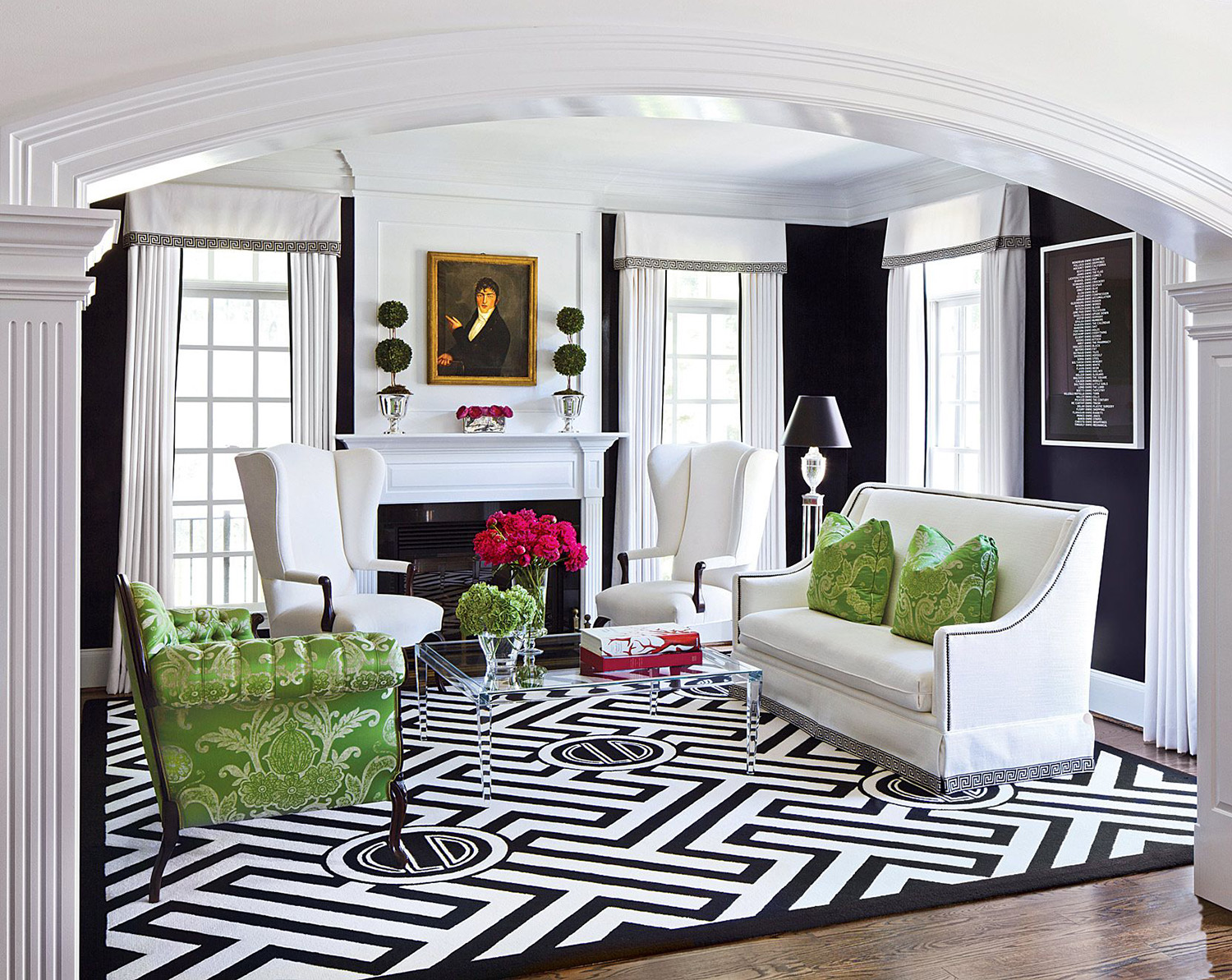
A Transitional Black and White Living Room with Green Accents
Image courtesy of Luxe Source
Understanding Color Schemes and Combinations
Creating a cohesive color scheme is essential for achieving a harmonious and visually pleasing space. Color schemes are combinations of colors that work well together and can evoke a specific mood or style. The most common color schemes include monochromatic, analogous, complementary, and triadic.
A monochromatic color scheme uses different shades and tints of a single color. This creates a sense of harmony and simplicity, making it an ideal choice for those who prefer a more subdued and minimalist look.
An analogous color scheme, on the other hand, involves choosing colors that are adjacent to each other on the color wheel. This creates a harmonious and cohesive look, with a subtle variation in shades.
Complementary color schemes involve using colors opposite each other on the color wheel. This creates a vibrant and dynamic contrast, making it an excellent choice for those who want to make a bold statement.
Triadic color schemes involve using three colors that are evenly spaced on the color wheel. This creates a balanced and visually appealing combination of colors.
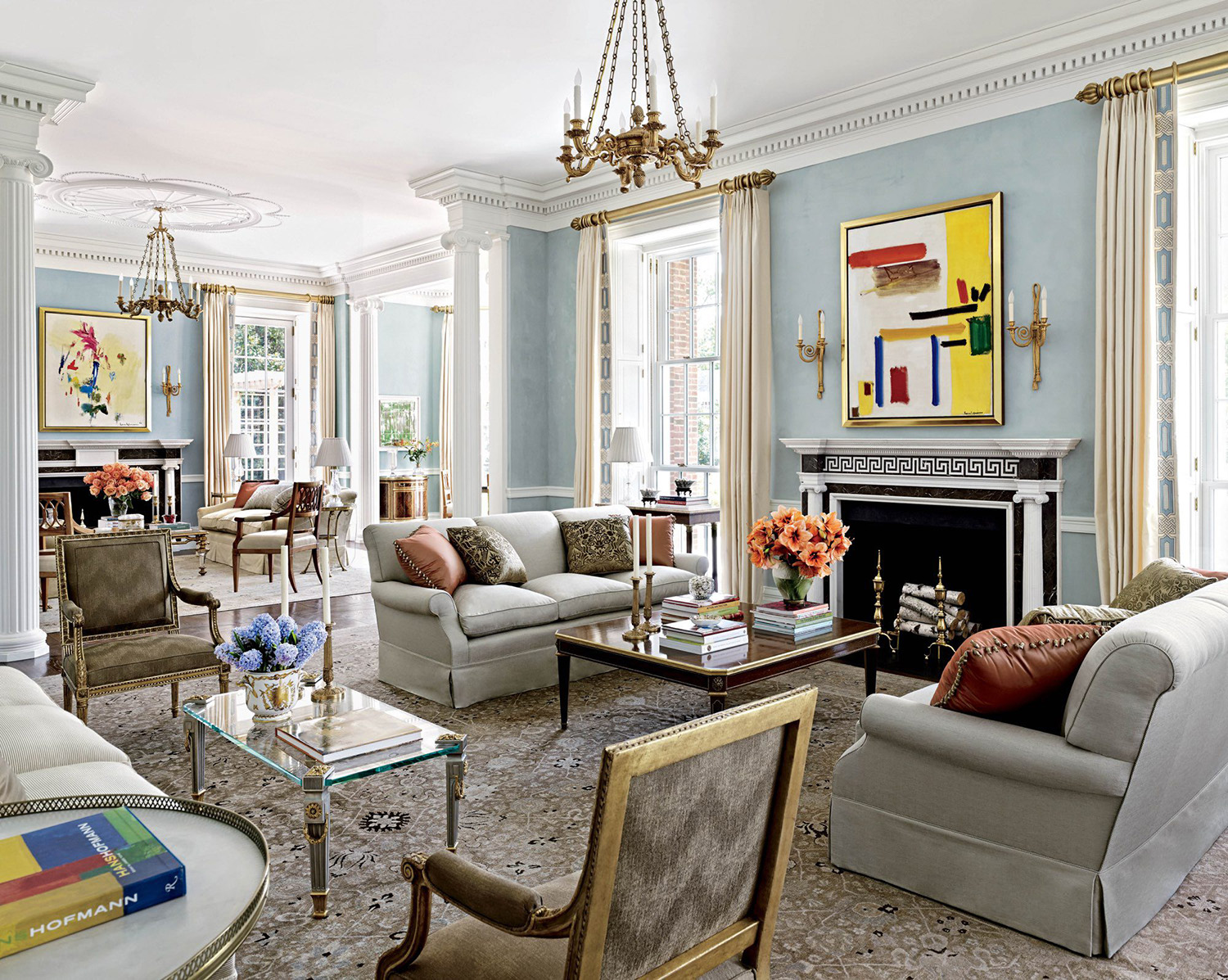
Colorful Home Decorating Ideas
Image courtesy of Cullman Kravis Design
The Science of Color
The science of color is not difficult, but not all individuals see or experience colors similarly. Part of the reaction to individual hues is physical, but much of how we react is emotional, based on language and custom. We talk about feeling blue, seeing red, and being green with envy. That influences how we experience color.
Every hue has a range of values, known by professionals as tints, shades, and tones. It helps to understand how to talk about color. Primary colors are red, blue, and yellow; mixed in equal parts, red and blue form purple, blue and yellow result in green, and yellow and red create orange.
These six hues form what is known as the basic color wheel. Again, if one were to mix adjacent hues equally with one another, six additional hues would be created, resulting in what is considered the full spectrum of the primary color wheel.
These full-strength hues are bright, clear, and intense. Mixed with black and white in various ways, they lead to an almost infinite range of colors for stylish home interiors.
Mixing white with full-strength hues results in tints, commonly referred to as pastels; pink is created by combining red and white in differing proportions; the more white, the lighter the tint.
In the same way, shades are created by mixing black with each hue, and tones result from adding black and white in differing proportions to the initial hue. Much of our world is colored by these greyed, muted hues.
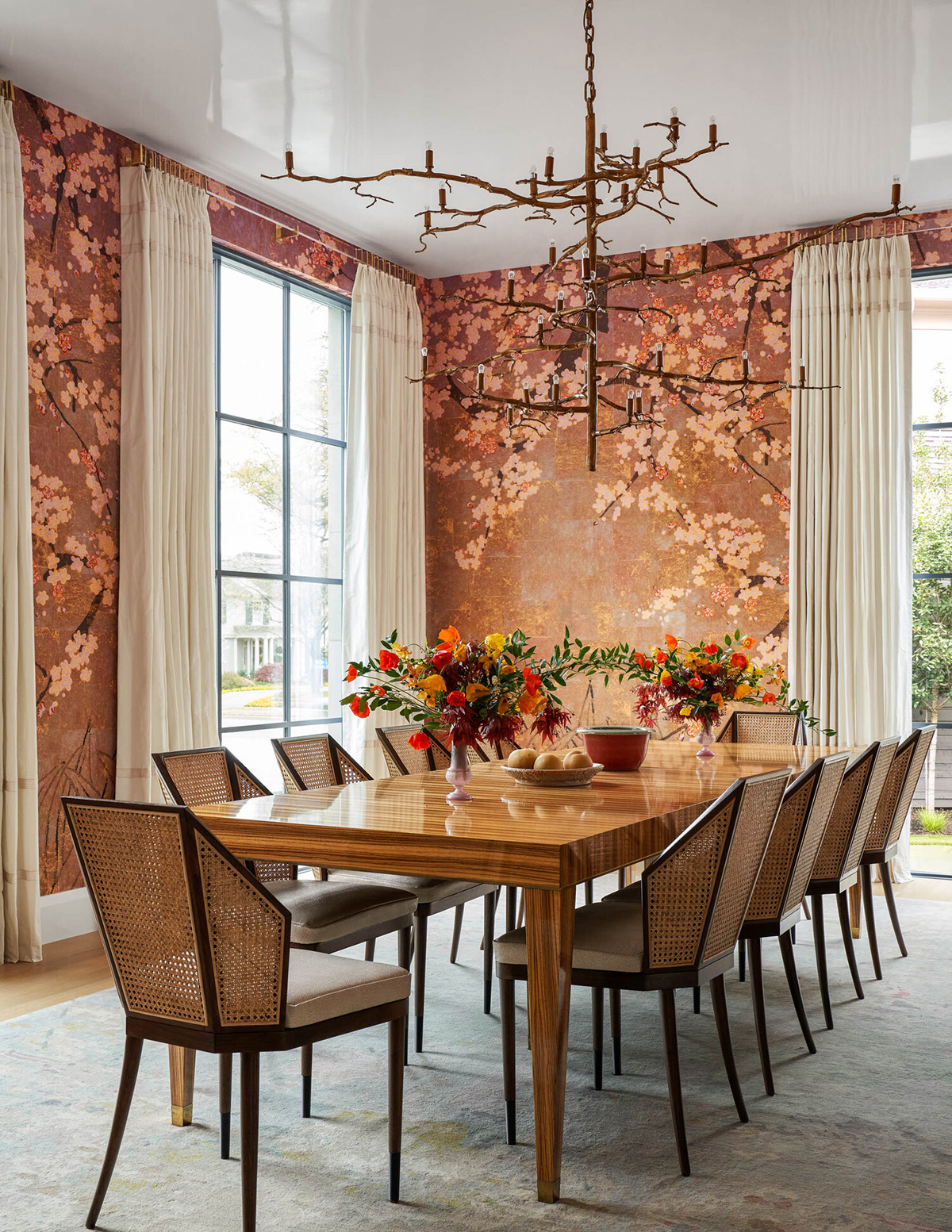
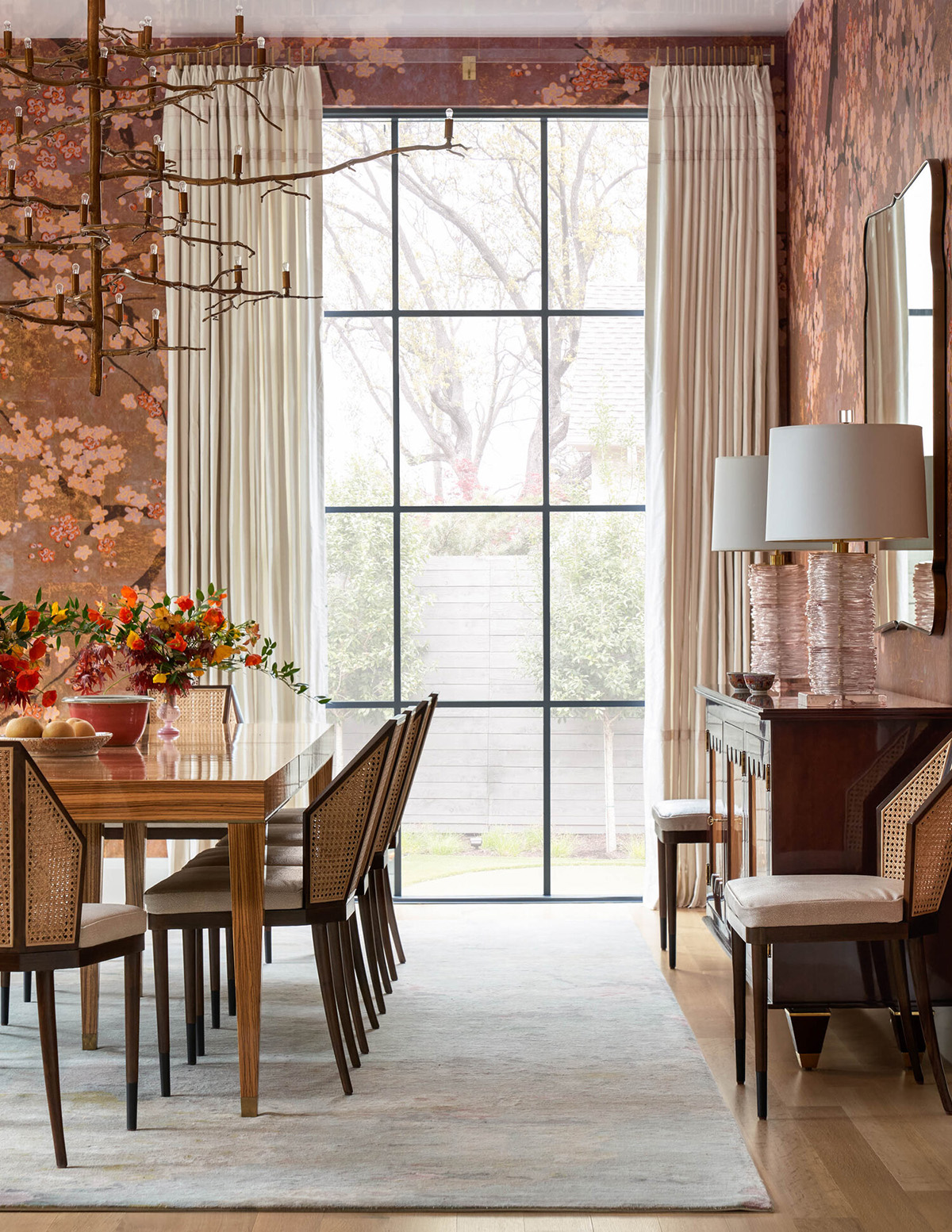
Decorating with Color | Warm, Sophisticated & Elegant Dining Room
Image courtesy of Mary Beth Wagner Interiors
Choosing the Right Color Palette for Your Space
When choosing a color palette for your space, it’s essential to consider factors such as the size and function of the room, the natural lighting, and your personal preferences. For smaller spaces, lighter and softer colors can help create an illusion of more space, while darker colors can add depth and coziness to larger rooms.
Consider the purpose of the room as well. For a bedroom, soothing and calming colors like blues and greens can promote relaxation and better sleep. In a workspace, energizing colors like yellow and orange can boost productivity and creativity. Consider the overall mood and ambiance you want to create and choose colors accordingly.
It’s also helpful to gather inspiration from various sources such as magazines, websites, and nature. Look for color palettes that resonate with you and reflect the style and mood you want to achieve. By taking the time to select your color palette carefully, you can create a space that feels cohesive, inviting, and truly reflects your personality.
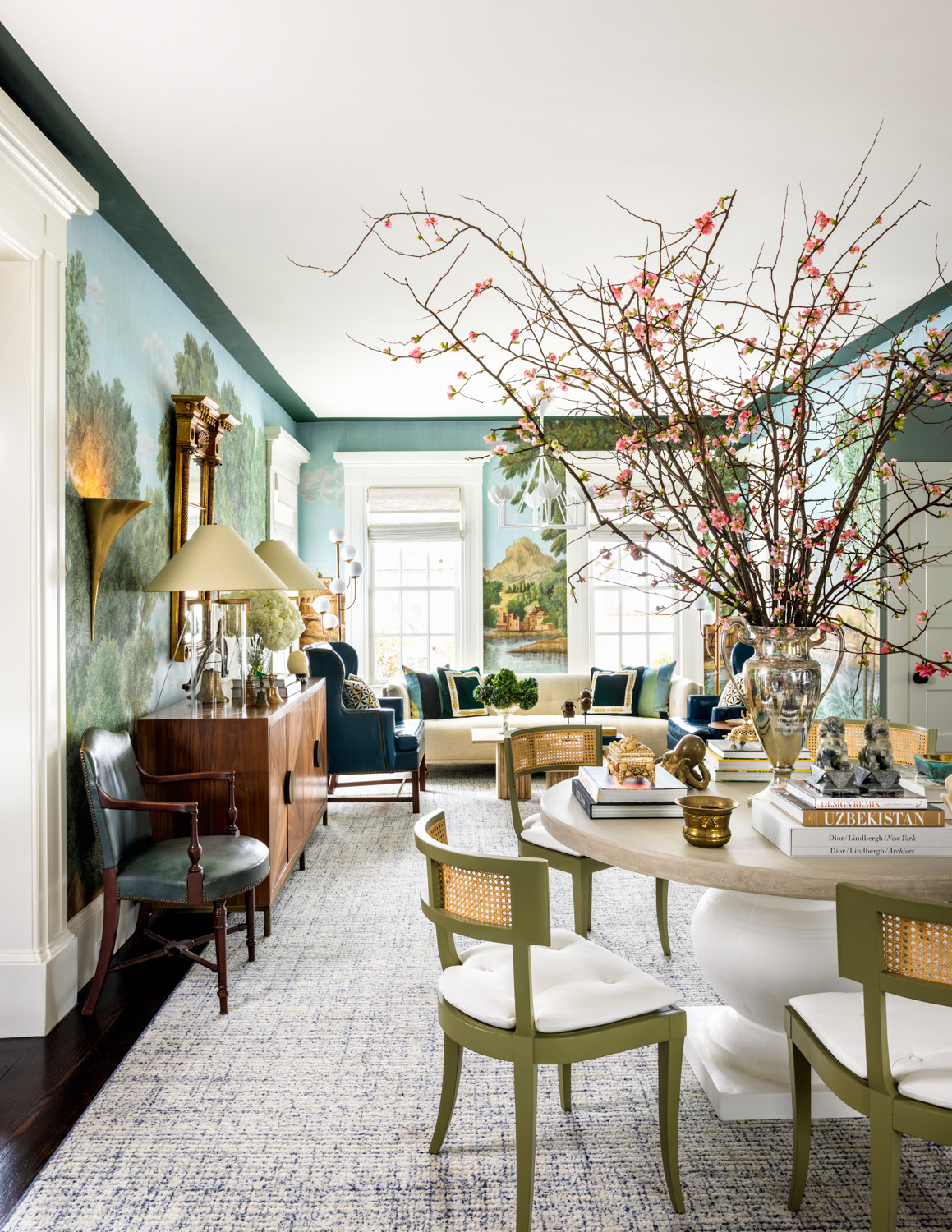
Decorating with Color
Image courtesy of Corey Damen Jenkins Design
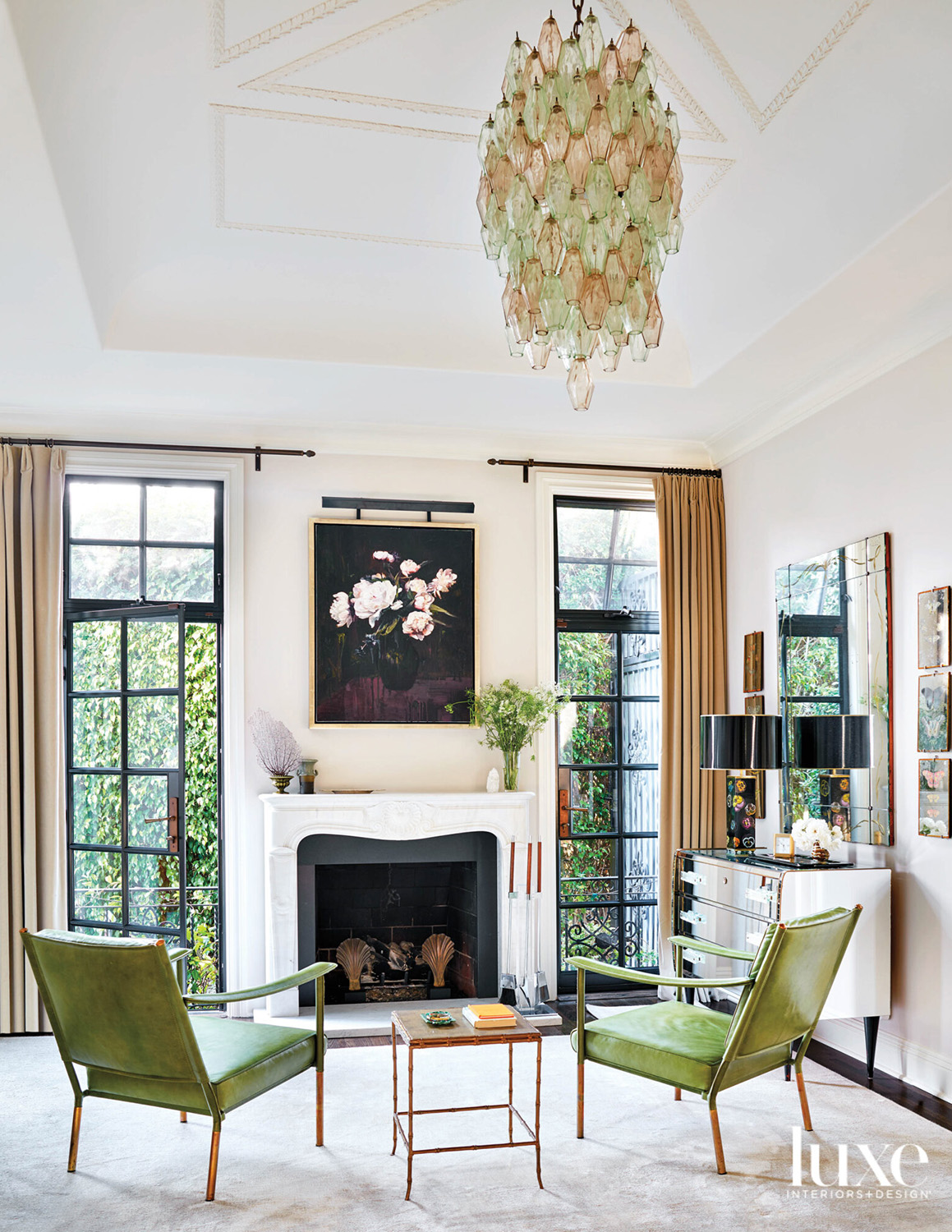
Decorating with Color
Image courtesy of LuxeSource.
How to Decorate with Color
Image courtesy of Mary Beth Wagner
Incorporating Bold and Vibrant Colors | Decorating with Color
While neutral colors can create a timeless and elegant backdrop, incorporating bold and vibrant colors can add personality and create visual interest in your space. If you’re not ready to commit to painting an entire room in a bold color, you can start by introducing color through accessories, artwork, or furniture.
For example, a vibrant red accent wall can create a focal point in a living room, while a bold yellow chair can add a playful touch to a neutral-toned bedroom. Feel free to experiment with different colors and combinations to find what works best for your space. Remember, color is subjective, and what matters most is how it makes you feel.
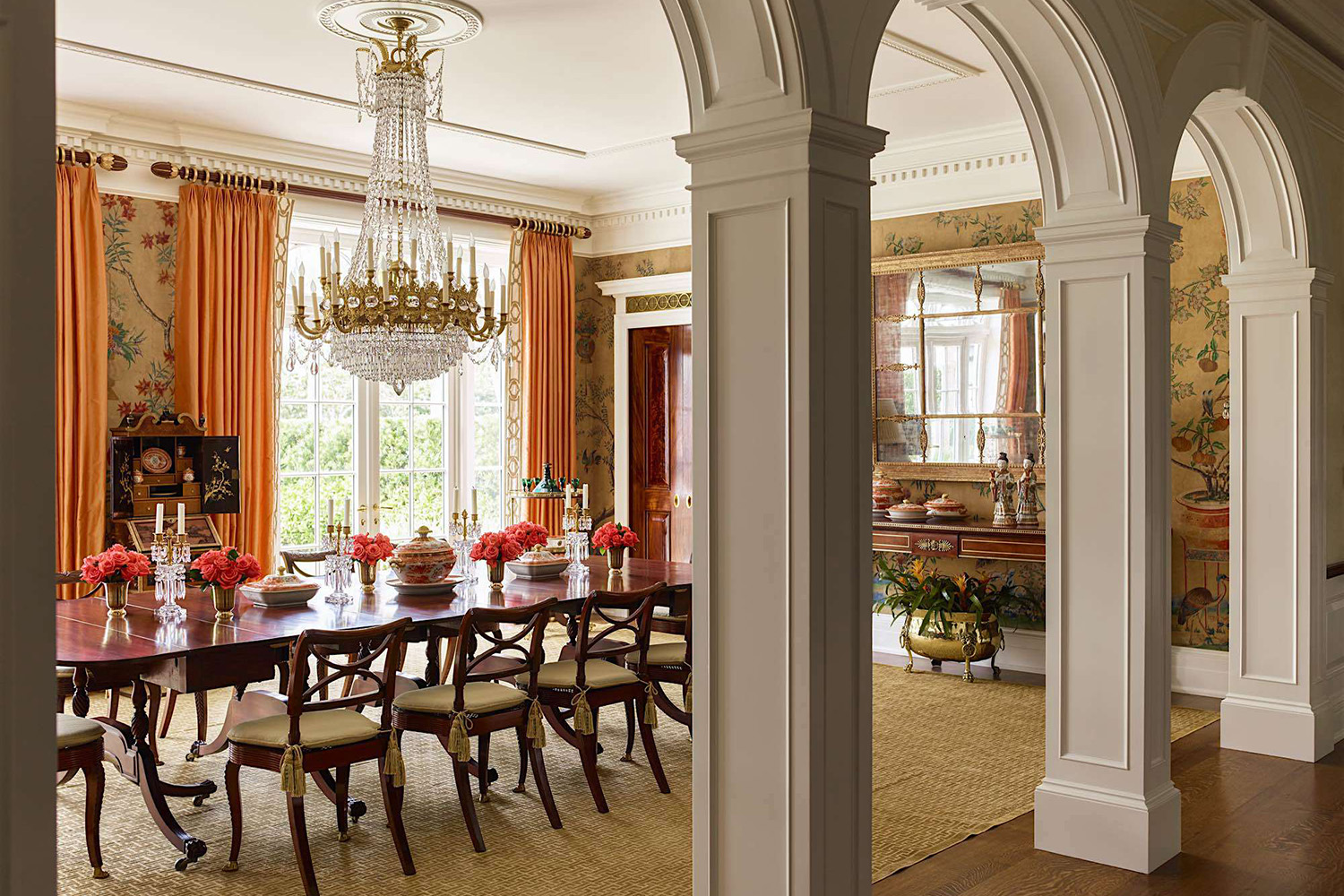
Colorful Home Decorating Ideas
Image courtesy of Cullman Kravis Design
Decorating with Color & Creating a Harmonious Color Scheme
Creating a harmonious color scheme involves finding the right balance between various colors and shades. One way to achieve this is by using a color wheel as a guide. Colors that are adjacent to each other on the wheel, such as blue and green, create a sense of harmony, while colors that are opposite each other, such as red and green, create contrast and visual interest.
You can also use the 60-30-10 rule, which suggests that 60% of the room should be dominated by a primary color, 30% by a secondary color, and 10% by an accent color. This creates a balanced and visually pleasing composition. However, please don’t feel limited by this rule; it’s merely a guideline. Trust your instincts and experiment with different proportions to find what works best for your space.
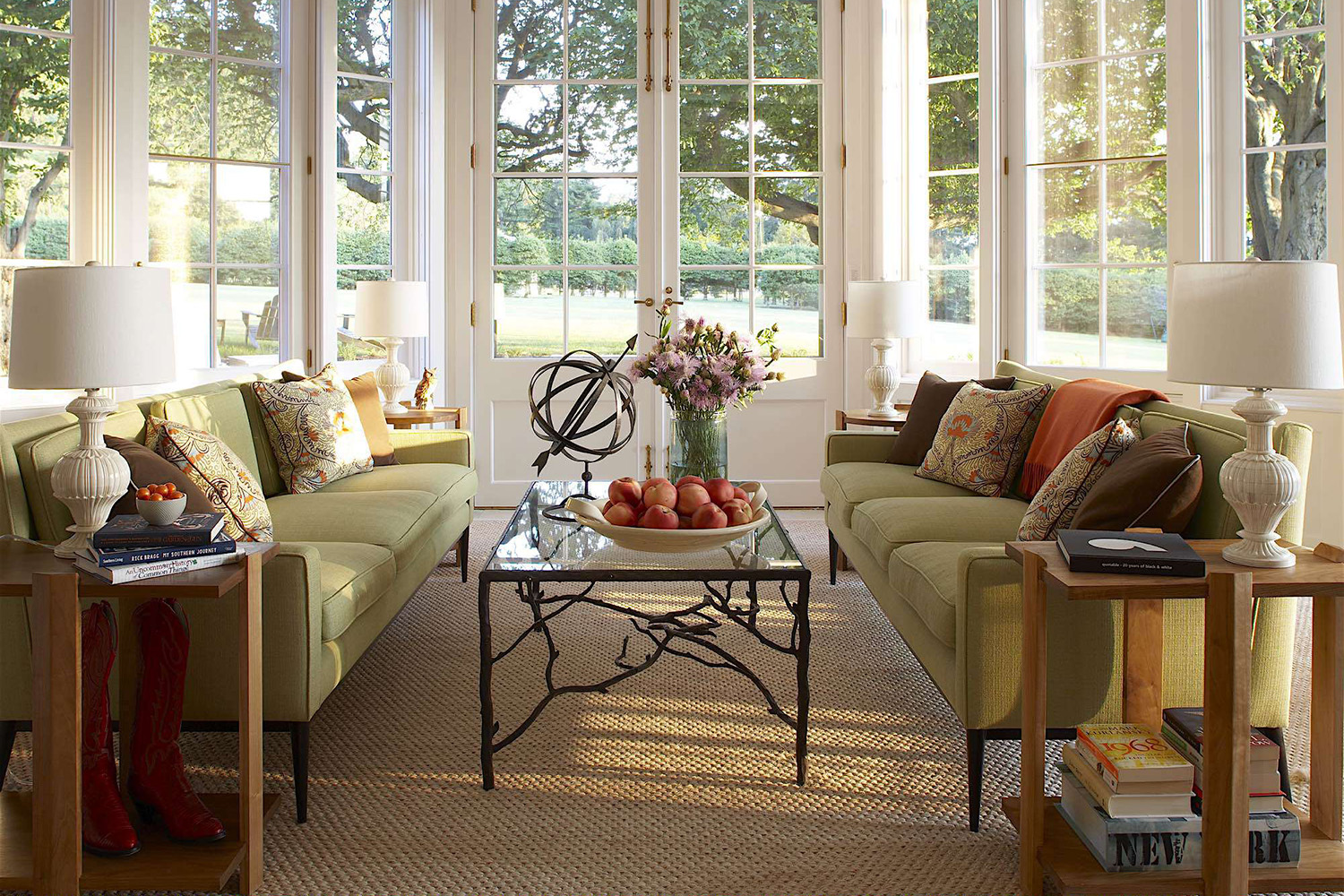
Colorful Palette Home Decorating Ideas
Image courtesy of Cullman Kravis Design
Using Color to Highlight Architectural Features
Color can be a powerful tool for highlighting the architectural features of a space. By using contrasting colors or shades, you can draw attention to elements such as moldings, arches, or built-in shelves. For example, painting the trim in a contrasting color can create a striking visual impact and make the architectural details stand out.
You can also use color to alter the proportions of a room visually. Painting the ceiling in a lighter color than the walls can make it appear higher while painting the walls in a darker color can make the room feel cozier and more intimate. Experiment with different color placements to enhance the architectural features and create a visually pleasing space.
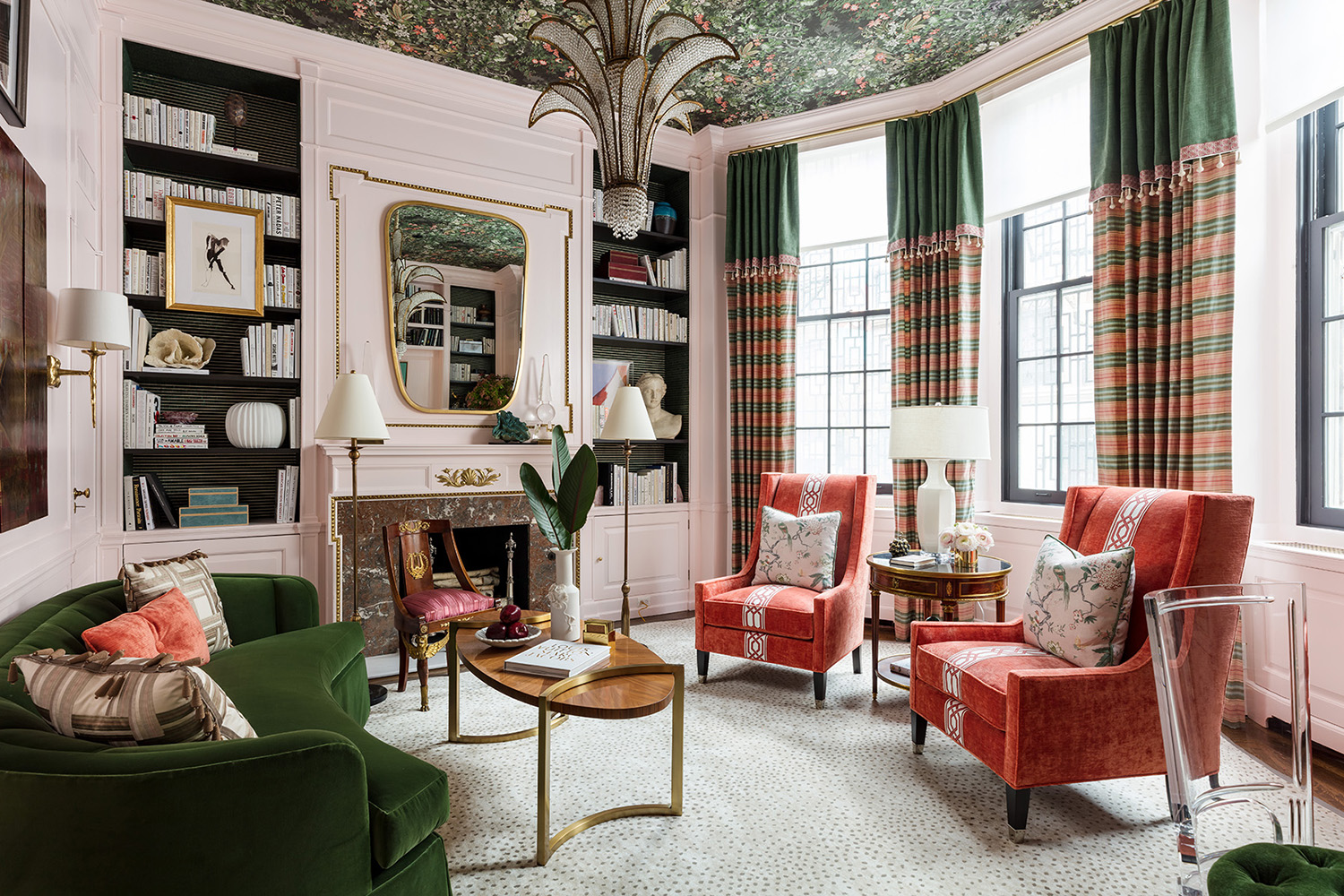
Colorful & Vibrant Living Room
Image courtesy of Corey Damen Jenkins Design
Adding Color with Accessories and Accents
Accessories and accents are a great way to introduce color into your space without making a permanent commitment. By using colorful pillows, throws, rugs, or curtains, you can easily change the color scheme of a room or update it with the latest trends. These small touches can add personality and create visual interest in an otherwise neutral space.
Artwork is another powerful way to add color and create a focal point in a room. Whether you opt for vibrant abstract paintings or subtle nature-inspired prints, art can reflect your style and taste. Consider the colors and mood you want to convey and choose artwork that complements your overall color scheme.
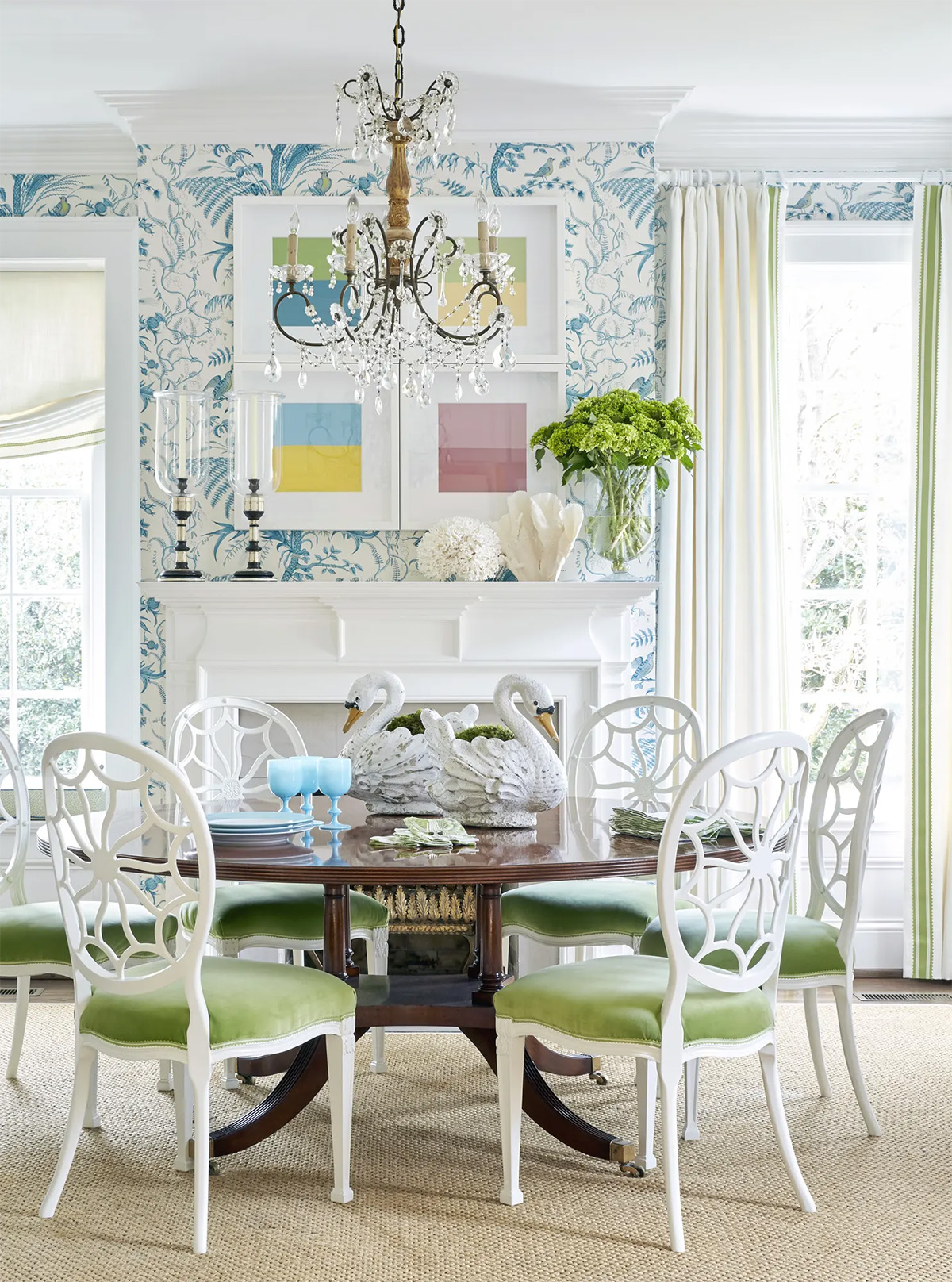
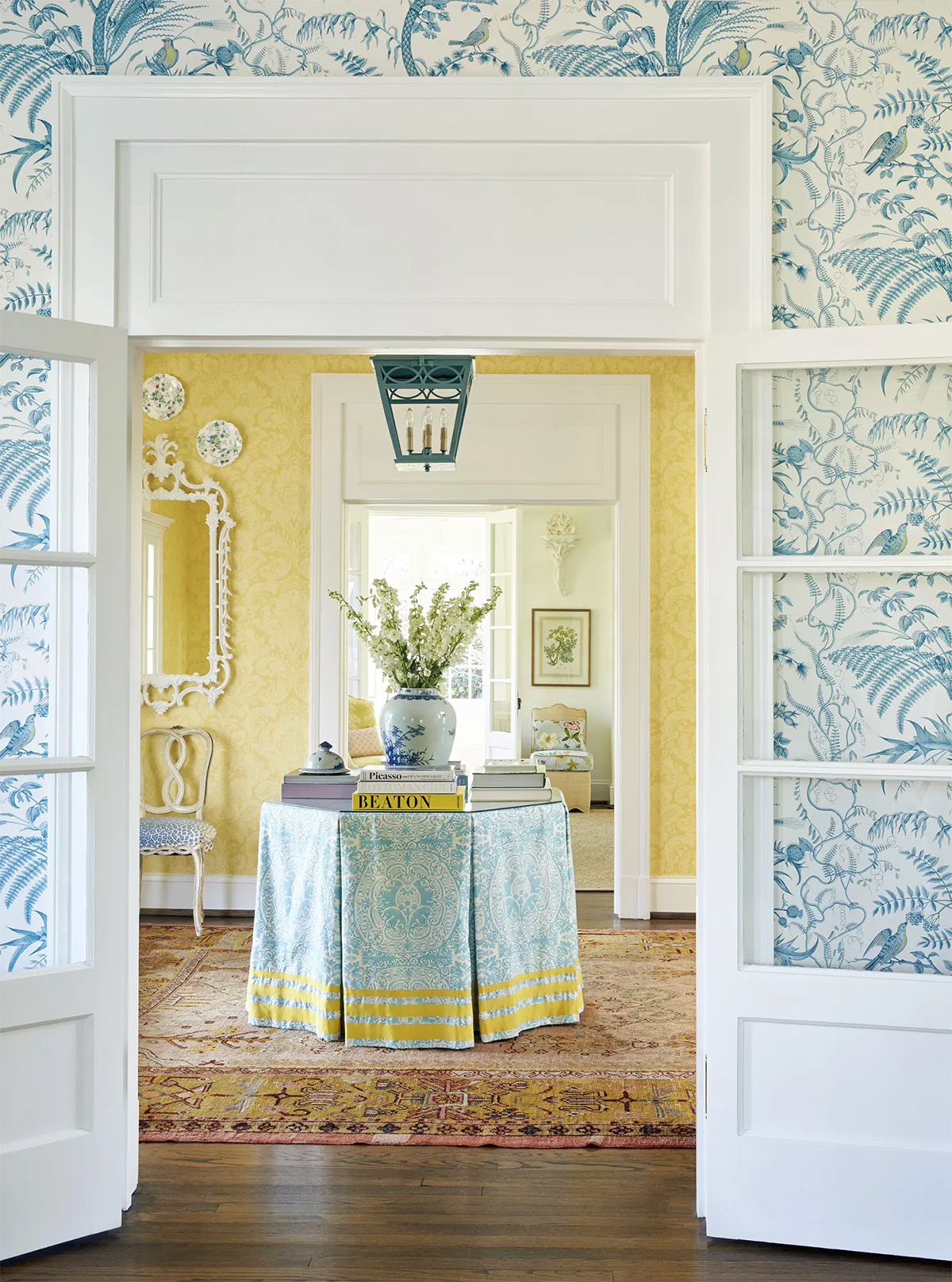
Bright & Sunny Hues
Image courtesy of Sarah Bartholomew
Tips for Balancing Color in Small Spaces
Balancing color in small spaces can be a challenge, as too many bold or bright colors can make the room feel overwhelming. However, this doesn’t mean you have to stick to neutrals. Here are a few tips for incorporating color in small spaces:
1. Opt for lighter shades: Lighter colors can make a small space appear more extensive and open. Consider using pastels or soft tones that still add color without overwhelming the room.
2. Use color strategically: Instead of painting all the walls in a small room, consider creating an accent wall to add color and create visual interest. You can also use colorful furniture or accessories to bring in pops of color without overwhelming the space.
3. Consider the flow of colors: When working with multiple colors in a small space, consider how they flow from one area to another. Avoid abrupt color transitions that can make the space feel disjointed. Instead, choose colors that complement each other and create a cohesive look.
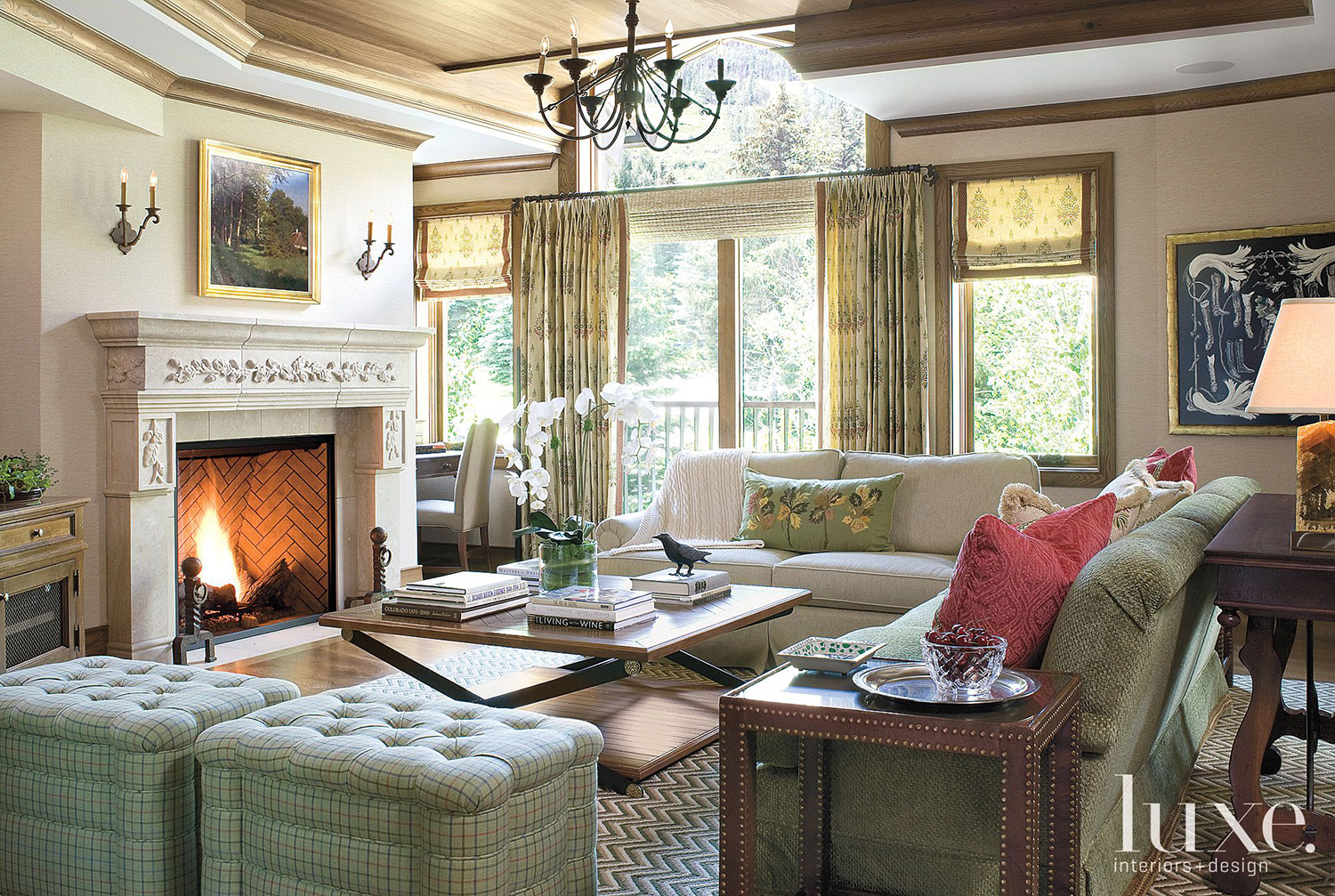
Sophisticated Vail Condo in Colorado
Image courtesy of Luxe Interiors + Design
This cozy living room features a roaring fire, and traditional pieces make you feel at home the moment you walk in the door. Working within a palette of greens, straw, and rich ivories, Interior Designer, Cindy Bardes Galvin, found decorative ways to visually delineate the spaces within the condo’s open floor plan.
Decorating with Color Conclusion
Decorating with color can be simplified. Pick the colors that speak to your soul and make your heart sing, and use them in ways that complement your architecture and your belongings. Allow your choices to give you pleasure and enrich your life.
Trends wax and wane over the years. Try not to be swayed by the current “color of the year” or the latest designer picks. Color in home decorating is a personal choice, and it doesn’t have to be a forever decision.
If you have any doubts, consider a neutral background — perhaps trendy grey, modern greige, or even a soft butter yellow, and then change the room’s look by adding or subtracting accent pieces.
View Recent Posts
Farmhouse Kitchen Ideas
Whether you want to create a more welcoming cooking space or plan a kitchen remodel, these ideas will help you design a kitchen infused with rustic elements and a connection to the outdoors.
Farmhouse Living Room Ideas
If you are looking for farmhouse living room ideas, you've come to the right place! This post focuses primarily on a modern approach to farmhouse design, with design tips and images of beautifully designed spaces.
Modern Decorating Ideas
Looking to give your home a fresh and contemporary update? Explore design ideas from top interior designers that will revamp every room in your home. Whether you're looking for a sleek and minimalist design or a bold and colorful one, I have included images of beautifully designed bedrooms, living rooms, kitchens, and dining rooms.
Modern Kitchen Ideas
If you want to transform your space into a stylish and functional haven, this article will take you through the top modern kitchen ideas that will revamp your home. I've included decorating tips and images of stunning kitchens in various design styles, from minimalist and contemporary to modern organic, and glamorous, with sleek surfaces.
Modern Bathroom Ideas
Few things are as perfect as a well-appointed gallery wall. No wonder it's an interior designer's go-to solution. An art or photo gallery wall provides the ability to create a flexible and customizable narrative that can be added to and improved over time.
Modern Dining Room Ideas
Few things are as perfect as a well-appointed gallery wall. No wonder it's an interior designer's go-to solution. An art or photo gallery wall provides the ability to create a flexible and customizable narrative that can be added to and improved over time.



